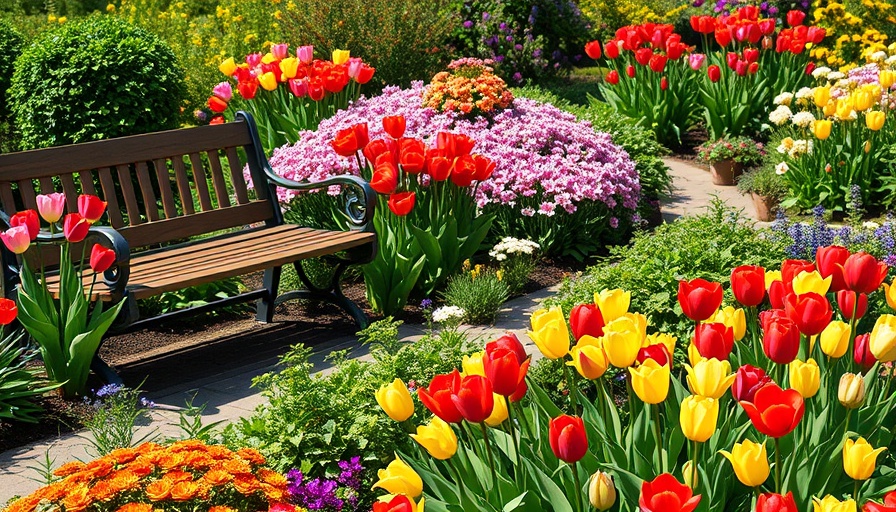
Transform Your Flower Beds with These Creative Design Tips
As we step into the gardening season, many homeowners are looking to enhance their outdoor spaces—especially their flower beds. Whether you're a novice gardener or have been planting for years, creating lush, vibrant flower beds can significantly improve your home’s aesthetic. Here are key insights that will help you elevate your garden designs this year.
Understanding Flower Bed Fundamentals
Before diving into design, it’s important to understand the basics of flower bed gardening. Soil quality, sunlight exposure, and plant compatibility are vital aspects that influence the health and appearance of your flower beds. Start by assessing your garden’s layout: is it sunlit or shaded? This understanding will guide your plant selection, ensuring you choose flowers that will thrive in your specific conditions.
Selecting the Right Plants: A Diverse Palette
A mix of annuals and perennials can create a dynamic flower bed that blooms throughout the year. Annuals such as petunias and marigolds provide a burst of color during the summer, while perennials like daisies and coneflowers return season after season. This diversity not only adds visual interest but also supports local ecosystems by attracting pollinators.
Layering Plants for Depth and Dimension
Another effective design technique is layering. By placing taller plants at the back of the bed and shorter ones in front, you create a visually appealing depth that draws the eye. Consider using ornamental grasses or tall blooms like hollyhocks as backdrops to a colorful array of shorter flowering plants. This strategy not only enhances visual flair but also provides a natural balance in your design.
Incorporating Hardscaping Elements
Don’t overlook the role of hardscaping in your flower bed design. Pathways made of stone or mulch can guide visitors through your garden while also improving drainage. Additionally, decorative pots and sculptures can serve as focal points, breaking the monotony of flower beds filled solely with plants. Remember, hardscaping complements the softness of plants and can bring needed structure to your designs.
Utilizing Color Theory for Impactful Designs
Color plays a crucial role in garden design. Warm colors such as reds and yellows tend to attract attention and create a sense of passion, while cool colors like blues and purples offer calmness. Consider creating color schemes based on harmony, contrast, or monochromatic themes to achieve the desired mood in your flower bed.
Seasonal Maintenance: Keeping Your Flower Beds Thriving
Your work doesn’t end with planting; ongoing maintenance is critical to lush flower beds. Regular watering, weeding, and deadheading are essential to keep your garden healthy. Seasonal adjustments, such as mulching in the spring and cutting back perennials in the fall, can promote growth while also minimizing pest infestations.
The Role of Technology in Modern Gardening
As technology continues to evolve, gardeners have access to tools that make maintaining and planning an effective flower bed easier. Smart irrigation systems, which can be controlled via smartphone apps, ensure efficient watering schedules. Additionally, apps that help in identifying plants or providing landscape design ideas can foster confidence, especially for novice gardeners.
Personalizing Your Space: Why It Matters
Finally, personalizing your garden space with thoughtful touches can truly make your flower bed stand out. Whether this means adding a garden bench for relaxation or creating a small meditation space surrounded by flowers, your flower beds can reflect your unique personality while serving as an inspiration for others.
As you start planning your gardening projects, consider how these insights can transform your flower beds into lush, inviting spaces. By focusing on design, plant selection, and maintenance, you can create a vibrant garden that not only enhances your home’s curb appeal but also contributes to your local environment.
 Add Row
Add Row  Add
Add 




Write A Comment